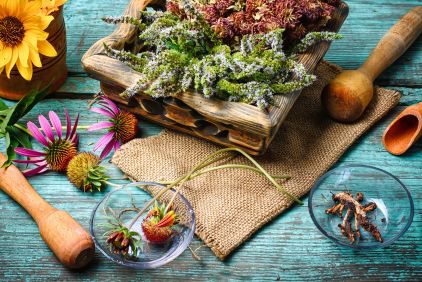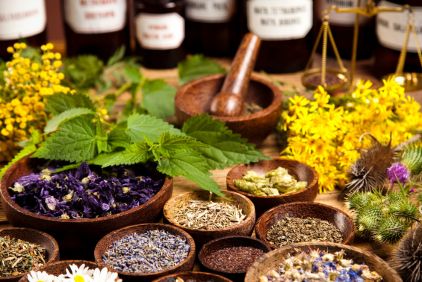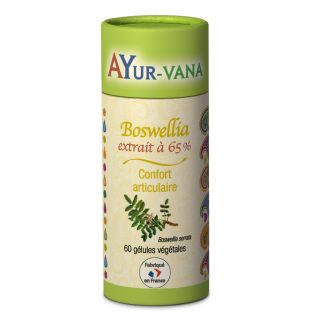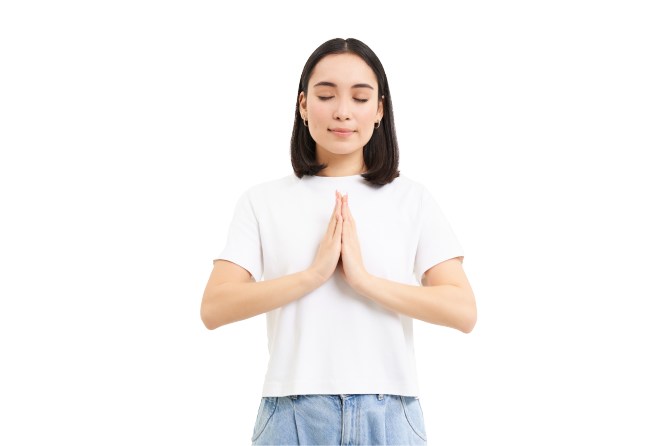
Ayurvedic pharmacopoeia uses a large number of medicinal plants. Many of these plants have been scientifically studied in India and the West, frequently demonstrating their preventive or curative virtues.
Today, Ayurvedic medicine is considered to be the most ancient system of healing, a complete and coherent system, like traditional Chinese medicine. It originated in India over 5000 years ago. Since 1982, it has been recognized as a "health care method" in its own right by the WHO (World Health Organization).
The holistic approach of Ayurvedic medicine is fascinating: it treats the patient as a whole. Its aim is to re-establish a disrupted equilibrium, to restore a harmony that guarantees good health. In Sanskrit, ayur means " life " and veda " knowledge ": it's the science of life, based on the concept of energy circulating in every human being and in every element of the universe, from the tiniest to the most gigantic.
According to Ayurvedic theory, the universe is made up of five fundamental elements - space (or ether), air, fire, water and earth - present in every human being, plant, animal and mineral, and combining to form three vital forces called doshas: Vâta, Pitta, Kâpha.
- Vâta comes from air and space and governs breathing, circulation and neuromuscular activity.
- Pitta comes from fire and regulates physical energy, digestion and metabolism.
- Kâpha comes from water and earth, and connects the different body structures and fluids.
The interactions and degree of balance of these energy currents would determine an individual's physical, emotional and mental nature. This constitution is specific to each individual.
Emotionally, the doshas express themselves in different registers: from joy to anxiety for Vâta, from anger to envy for Pitta, from generosity to avarice for Kâpha. Each person would correspond to a physical and psychological type according to his or her constitution, subject to variations around a point of equilibrium. The Ayurvedic practitioner takes into account what he observes during the consultation to guide his diagnosis, and choose his therapeutic strategy.
Diagnosis and treatment in Ayurveda
For Ayurvedic masters, disease stems from imbalance between the doshas: their clinical practice supports the idea that an excess or deficiency of energy ultimately causes disturbances, which can turn into disease. Together with the patient, they look for the cause of the imbalance in habits, lifestyle and environment.
At the same time, taking pulses and looking for physical signs (examination of skin, hair, nails, appetite and transit, etc.) leads the practitioner to a more precise diagnosis. He can then take preventive action, even before the disease sets in.
By reinforcing the body's natural defenses, mobilizing its capacity for self-repair and returning to homeostasis (a state of physiological regulation), it helps it to re-establish its balance and maintain it in the long term. Now more responsible, better informed and more vigilant, individuals can take charge of their own health.
No ayurvedic medicine without plants

Ayurvedic pharmacopoeia uses a large number of medicinal plants. Many of these plants have been scientifically studied in India and the West, frequently demonstrating their preventive or curative virtues. Examples include Guggul, Boswellia serrata, Turmeric, Gymnema sylvestris, Ginger, Fenugreek and Brahmi.
These plants are often used in combination to obtain a synergistic action: this is the case with Triphala, Trikatu or Trimada. When the sum of these actions provides an effect greater than the simple sum of the effects of each product taken separately, we speak of synergy.
Thanks to the combined action of its three fruits, Triphala, for example, promotes the assimilation of nutrients, their energetic combustion and the elimination of waste, resulting in regulation of intestinal transit, metabolism and, consequently, weight.
No treatment without a balanced lifestyle
The way we eat, move, sleep, relax and cope with daily stress is our way of life. We act and react through our bodies, emotions and thoughts, often repetitively since childhood, with varying degrees of flexibility and fluidity.
Some blockages cut us off from our physical sensations or feelings, producing symptoms, physical or psychological, characterized by their excessive, recurrent and rigid aspect.
Ayurveda aims to transform these ruptures into harmony, to reconnect what was disconnected, taking into account our constitution and specific needs, to facilitate the circulation of energy. Plants play a fundamental role in this transformation, provided they are combined with dietary rebalancing, physical exercise adapted to each individual, massage or meditation, to achieve a global effect that the body can integrate in a sustainable way.










